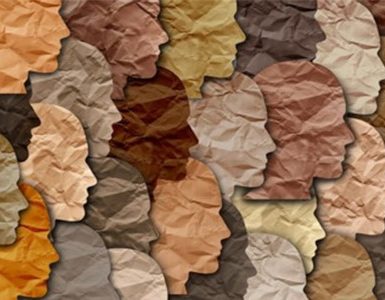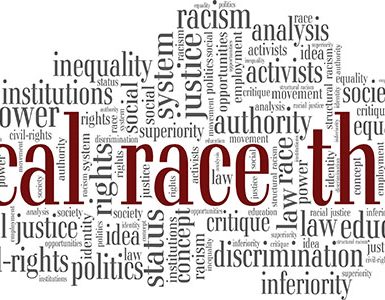According to the National Alliance on Mental Illness, 1 out of every 5 Americans experiences a mental health issue in any given year. But even though individualized treatment can improve outcomes and quality of life for these individuals, fully 60% of them won’t seek treatment.
Why is this so? Social stigma is a likely contributing factor. Embarrassment, shame, or even a lack of awareness about mental illness can prevent many people from seeking the help they need.
Access is another key factor. Many people—particularly those who are older, minority, lower-income, and/or uninsured—are unable to get adequate care because of a general scarcity of mental health resources and overall financial hardship.
In the District of Columbia, the 700,000+ residents represent the full range of socioeconomic, age, and cultural diversity here in the United States. To help at-risk individuals in the area connect with appropriate mental health services, it can be beneficial to raise awareness about the quality and accessibility of the district’s resources, especially as they compare to others locally and nationally.
How The District of Columbia Fairs in Mental Health Services
The national and community-based nonprofit organization Mental Health in America periodically releases an overall ranking of the 50 states and the District of Columbia in terms of mental illness prevalence and access to care. Lower rankings indicating higher rates of mental illness and lower access to services.
Based on 2014 data, the District of Columbia ranked 18th overall on this list, placing it toward the middle of the pack. States ahead of the district, including the top 5 of Connecticut, Massachusetts, Vermont, South Dakota, and Minnesota, overall have lower reported mental illness and increased access to care. Measures used to rank states included:
- Access to insurance and treatment
- Quality and cost of insurance
- Reports of unmet needs
- Workforce availability
This places the district well ahead of neighboring Virginia (38th), however, leaves it lagging behind nearby Maryland, which ranks 14th. To help understand why, consider the following:
Pros
- The metropolitan environment of the district attracts some of the nation’s leading mental health providers. Nearby Johns Hopkins University and University of Maryland (College Park) both fall in the nation’s top 40 schools for psychology, according to US News & World Report. Meanwhile, Johns Hopkins Hospital and Sheppard Pratt Hospital both rank among the nation’s 10 hospitals for psychiatry, and Johns Hopkins is also currently ranked number three for the nation’s best hospitals overall.
- The district also offers dozens of behavioral/mental health, drug treatment, and professional counseling services provided in inpatient and outpatient environments. The Department of Behavioral Health has created a Behavioral Resource Link which lists area services that are available for specific populations including military and veterans, adolescents and families, and older adults.
- In light of research which shows that people who are low-income have a harder time accessing and affording mental health services, Department of Behavioral Health routinely shares information about state and federally funded programs that can help offset the cost of care for eligible uninsured or underinsured individuals. This includes DC Healthy Families, DC Medicaid, and Medicare.
- Prolonged wait time and limited options can hinder a person’s ability to receive necessary care. In Washington D.C.—a community with an estimated 28,400 veterans as of 2016, just over 4,000 of whom are living in poverty according to the Census Bureau—research indicates that wait times are generally improving. This is similar to improvements seen within the United States Department of Veterans Affairs system as a whole, according to research from the Journal of the American Medical Association. However, frustrations felt by individuals cannot be overlooked.
- Criminal justice officials in the DC area utilize innovative programs to help people with severe mental illnesses stay out of the criminal justice system. These include mental health courts and crisis intervention training. Their efforts in criminal diversion has earned them an A+ according to the Arlington, VA-based nonprofit organization Treatment Advocacy Center.
Cons
- Despite high marks for criminal diversion, the district’s involuntary psychiatric treatment laws (which protects people who cannot seek care voluntarily, in addition to protecting other community members) are currently lacking. The Treatment Advocacy Center has given the district sobering F grade in this area, which includes closely regulated inpatient and outpatient commitment programs. Demerits include vague and ambiguous language regarding the criteria for what is considered harm or violence to self or others (a necessity for qualifying. In addition to clarifying the legal language, suggested recourse includes restoring a sufficient number of inpatient beds to improve access for qualifying individuals in times of crisis and providing timely treatment.
- Research has found a correlation—which is not to say causation—between mental illness and urban-area living. Poverty, social isolation, and discrimination are frequently listed as confounding issues.
- Research also indicates that people of racial and ethnic minorities have increased difficulty accessing mental health services. According to CensusReporter.org, 45% of the district’s population identifies as black. This suggests that the district should be taking into account the potential impact of racial and ethnic disparities on mental health accessibility.
The overall implication here is that the cultural and socioeconomic milieu of urbanized DC may itself contribute to mental health challenges faced by residents here.
And make no mistake: many residents are facing such challenges. According to the US Census Bureau and National Institute of Mental Health, the number of district residents living with schizophrenia and severe bipolar disorder in 2017 was an estimated 6,000 and 13,000, respectively. This says nothing of the prevalence of other mental health conditions, including post-traumatic stress disorder, major depressive disorder, and generalized anxiety disorder.
To this end, local, state, and federal legislation must be on-going to improve access, quality of care, and other types of social support for district residents and their families.
Looking for Mental Health Care Near You?
For a comprehensive list of mental health services in the DC area, visit DC’s Department of Health Care Finance website or call their Access Helpline at 1-888-793-4357. More information can also be found via the behavioral health treatment locator available at the Substance Abuse and Mental Health Services Administration’s website.


















Add comment